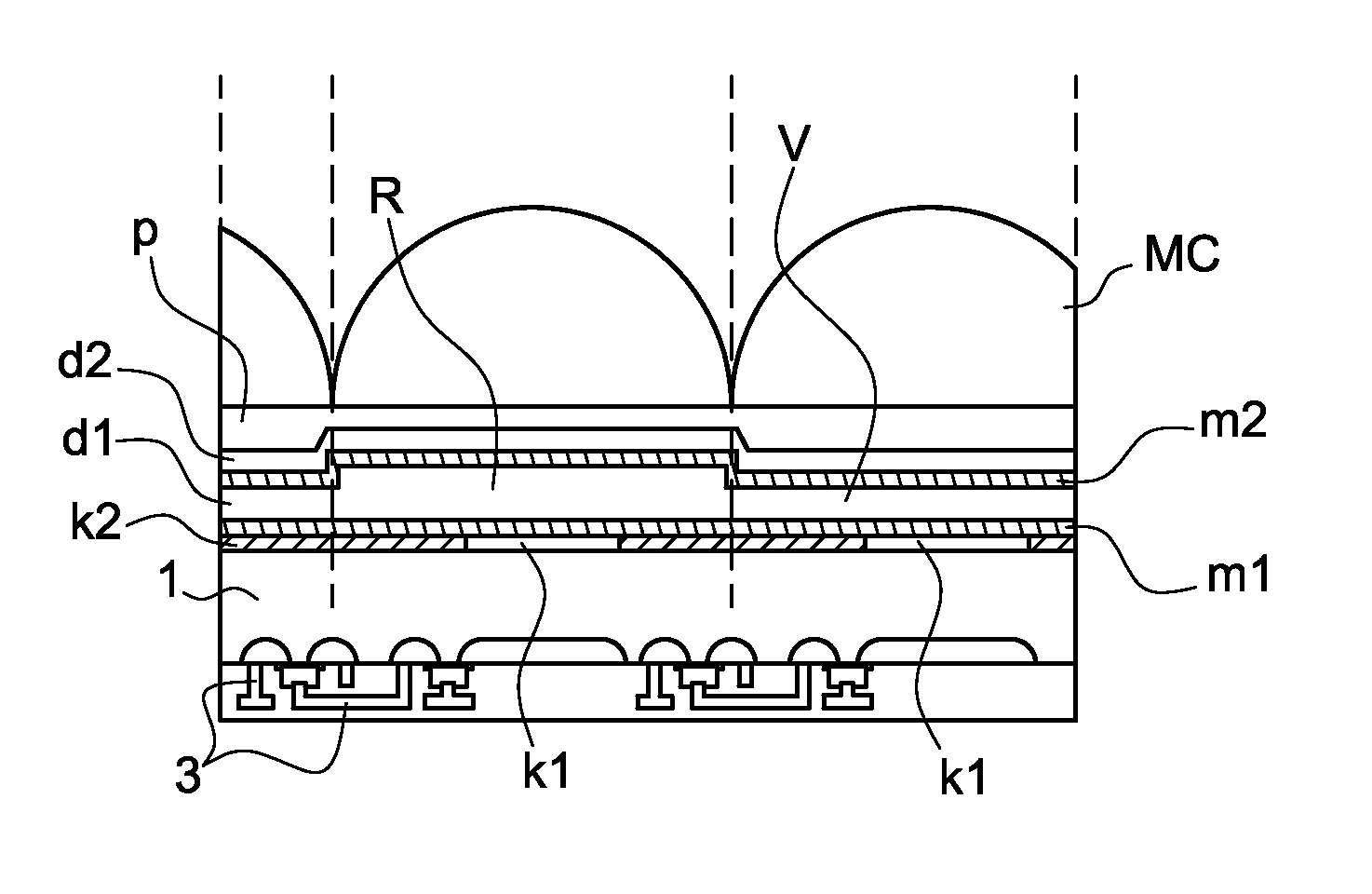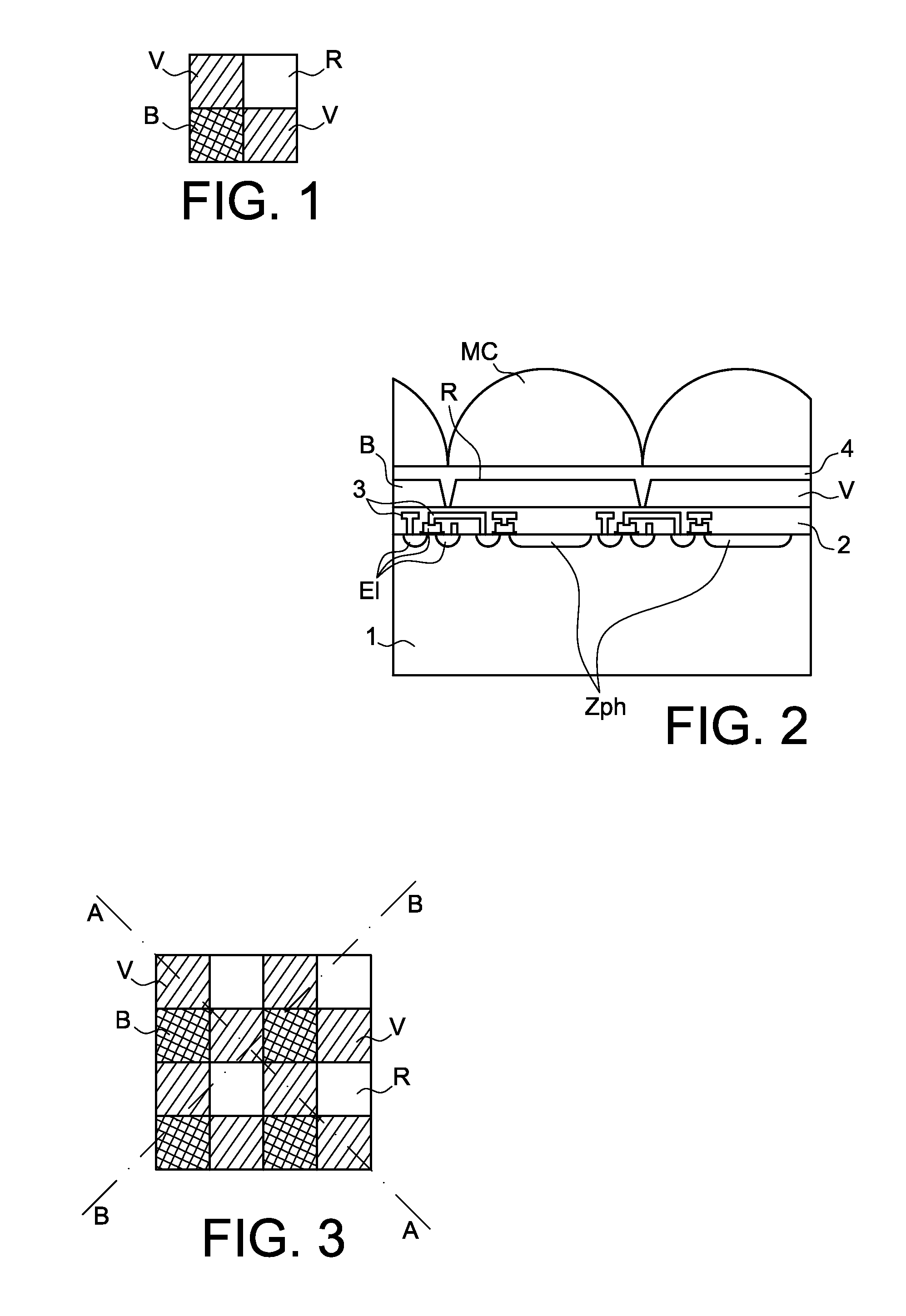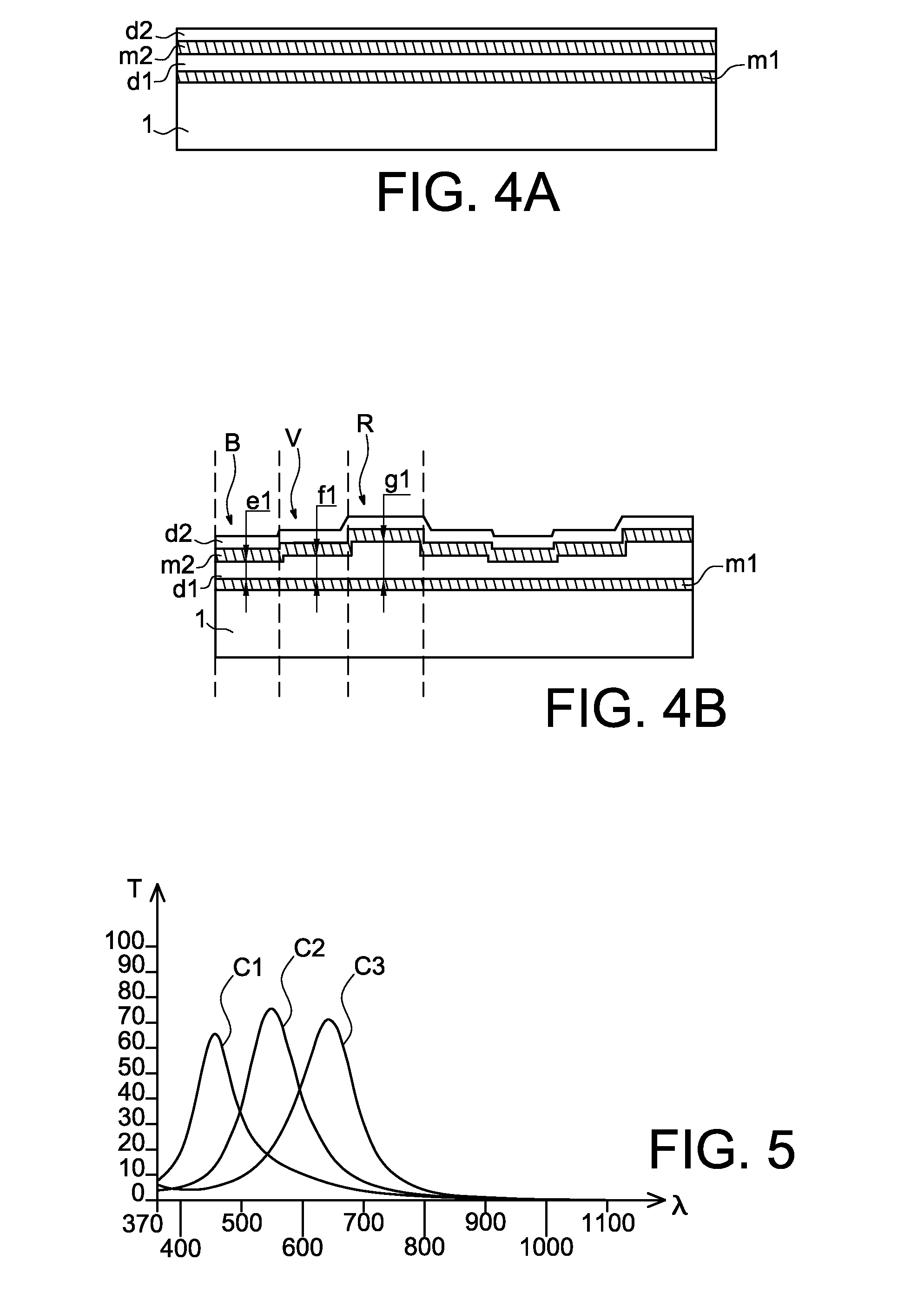Optical filtering matrix structure and associated image sensor
- Summary
- Abstract
- Description
- Claims
- Application Information
AI Technical Summary
Problems solved by technology
Method used
Image
Examples
first embodiment
[0049]FIGS. 4A and 4B illustrate sectional views, along two different axes, of an optical filtering matrix structure according to the invention. With reference to FIG. 3, FIG. 4A is a sectional view along the axis AA of FIG. 3 and FIG. 4B is the sectional view along the axis BB of FIG. 3. The AA axis diagonally cuts the green optical filters V. The BB axis is an axis perpendicular to the AA axis and cuts, outside the diagonals, successive blue B, green V, red R, green V, blue B, green V, red R, etc. optical filters.
[0050]The image sensor comprises a photosensitive semiconducting element 1, for example silicon, on which a first metal layer m1, a first transparent layer d1, a second metal layer m2 and a second transparent layer d2 are successively laid. The metal used for producing the metal layers m1 and m2 is silver (Ag) for example and the material used for producing the transparent layers d1 and d2 is a dielectric for example, which may be titanium dioxide (TiO2) for example.
[0051...
second embodiment
[0058]FIGS. 6A and 6B illustrate sectional views, along two different axes of an optical filtering matrix structure according to the invention. With reference to FIG. 3, FIG. 6A is a sectional view along the AA axis and FIG. 6B is a sectional view along the BB axis.
[0059]The image sensor comprises a photosensitive semiconducting element 1, for example silicon, on which three metal layers m1, m2, m3 and three transparent layers d1, d2, d3 are alternately laid, the metal layer m1 being in contact with the semiconducting element 1. The metal layers m1-m3 are in silver (Ag) for example, and the transparent layers d1-d3 are in titanium dioxide (TiO2) for example.
[0060]The layers d1 and d2 are adjustment layers, of which the changes in thickness set the different transmission wavelengths of the filter, all the other layers having a constant thickness. An overthickness resulting from a change in thickness of the layer d1 coincides with an overthickness resulting from a change in thickness ...
PUM
 Login to View More
Login to View More Abstract
Description
Claims
Application Information
 Login to View More
Login to View More - R&D
- Intellectual Property
- Life Sciences
- Materials
- Tech Scout
- Unparalleled Data Quality
- Higher Quality Content
- 60% Fewer Hallucinations
Browse by: Latest US Patents, China's latest patents, Technical Efficacy Thesaurus, Application Domain, Technology Topic, Popular Technical Reports.
© 2025 PatSnap. All rights reserved.Legal|Privacy policy|Modern Slavery Act Transparency Statement|Sitemap|About US| Contact US: help@patsnap.com



